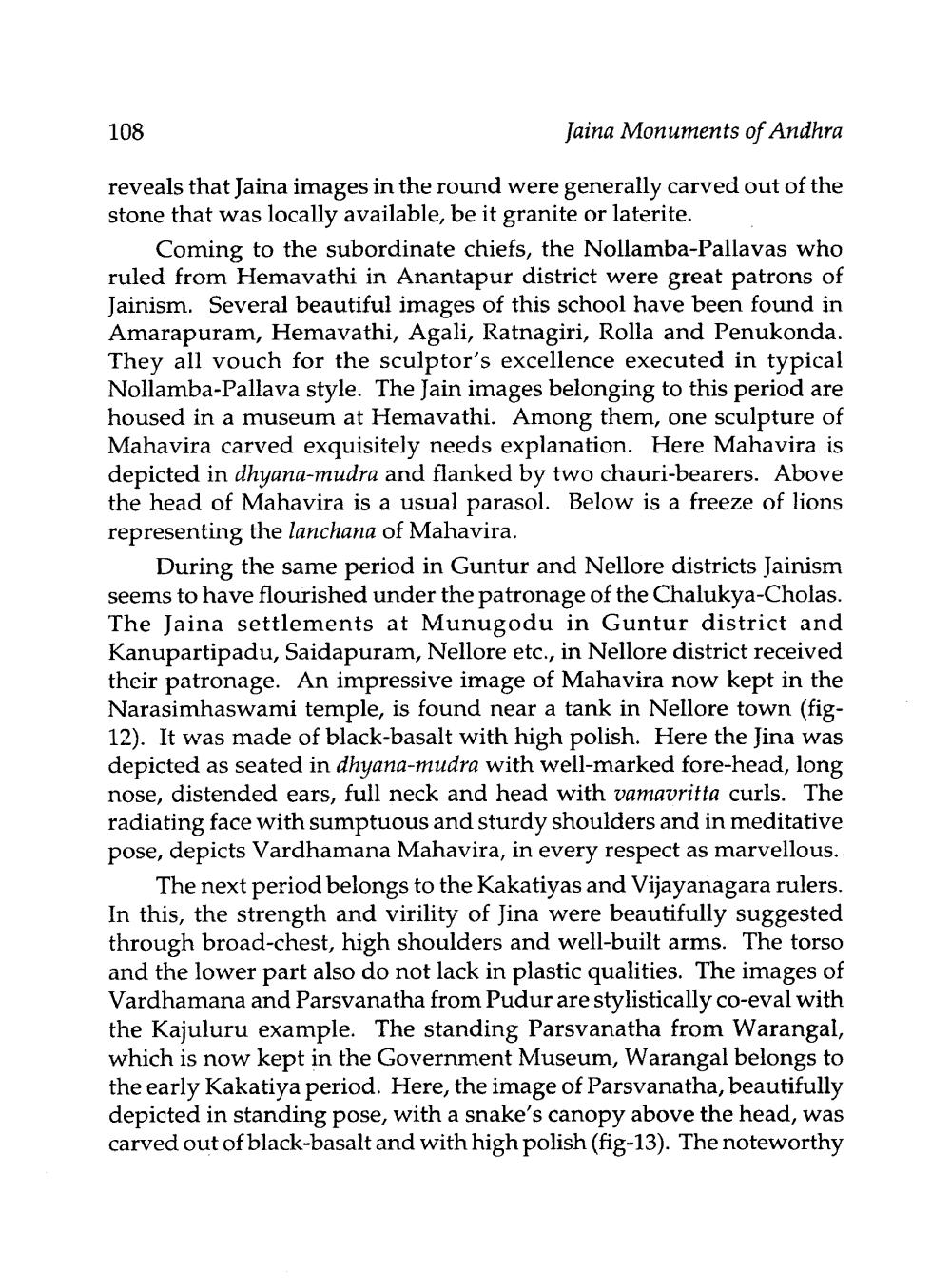________________
Jaina Monuments of Andhra
reveals that Jaina images in the round were generally carved out of the stone that was locally available, be it granite or laterite.
108
Coming to the subordinate chiefs, the Nollamba-Pallavas who ruled from Hemavathi in Anantapur district were great patrons of Jainism. Several beautiful images of this school have been found in Amarapuram, Hemavathi, Agali, Ratnagiri, Rolla and Penukonda. They all vouch for the sculptor's excellence executed in typical Nollamba-Pallava style. The Jain images belonging to this period are housed in a museum at Hemavathi. Among them, one sculpture of Mahavira carved exquisitely needs explanation. Here Mahavira is depicted in dhyana-mudra and flanked by two chauri-bearers. Above the head of Mahavira is a usual parasol. Below is a freeze of lions representing the lanchana of Mahavira.
During the same period in Guntur and Nellore districts Jainism seems to have flourished under the patronage of the Chalukya-Cholas. The Jaina settlements at Munugodu in Guntur district and Kanupartipadu, Saidapuram, Nellore etc., in Nellore district received their patronage. An impressive image of Mahavira now kept in the Narasimhaswami temple, is found near a tank in Nellore town (fig12). It was made of black-basalt with high polish. Here the Jina was depicted as seated in dhyana-mudra with well-marked fore-head, long nose, distended ears, full neck and head with vamavritta curls. The radiating face with sumptuous and sturdy shoulders and in meditative pose, depicts Vardhamana Mahavira, in every respect as marvellous.
The next period belongs to the Kakatiyas and Vijayanagara rulers. In this, the strength and virility of Jina were beautifully suggested through broad-chest, high shoulders and well-built arms. The torso and the lower part also do not lack in plastic qualities. The images of Vardhamana and Parsvanatha from Pudur are stylistically co-eval with the Kajuluru example. The standing Parsvanatha from Warangal, which is now kept in the Government Museum, Warangal belongs to the early Kakatiya period. Here, the image of Parsvanatha, beautifully depicted in standing pose, with a snake's canopy above the head, was carved out of black-basalt and with high polish (fig-13). The noteworthy




